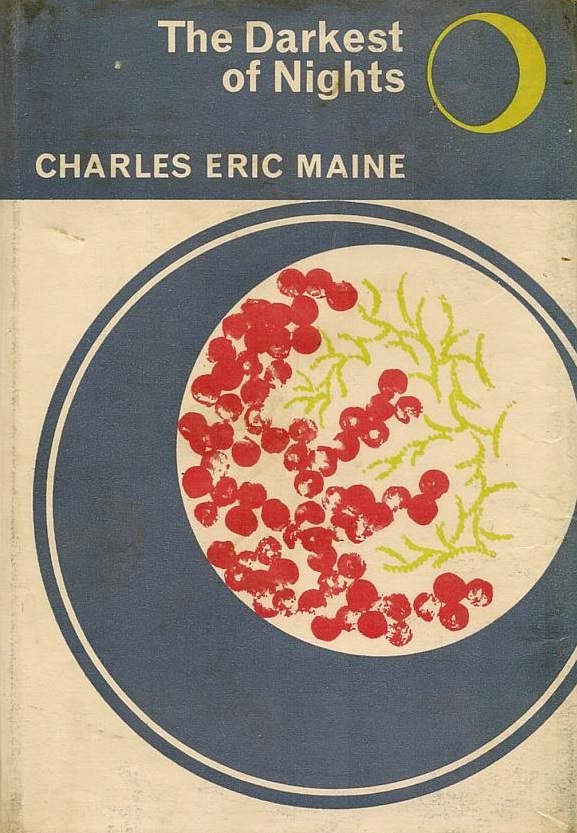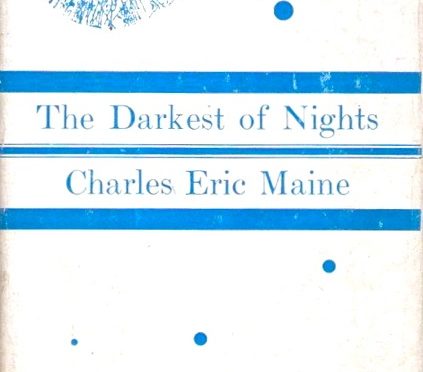
by Mark Yon
Scenes from England
Hello again!
With New Worlds magazine turning bi-monthly last month I find myself in the position of having nothing particular to report this month. I could talk about what I’ve seen at the cinema (Becket, with Peter O Toole and Richard Burton — very good) or on television (I’m still enjoying Doctor Who), but I usually turn to something to read for my entertainment.
So, what I’ve decided to review this month is perhaps something I should have commented on before. I am a subscriber to the British Science Fiction Book Club, and have been for many years. The club has been sending me a hardback book since 1953 for the princely sum of 6s and 6d (six shillings and sixpence, about $1.50?) a month. Initially it was bi-monthly, but has been so popular it soon changed to monthly.
The books are selected for readers by a panel, which has included at various stages Arthur C. Clarke, Kingsley Amis and coincidentally John ‘Ted’ Carnell, the recent editor of New Worlds.
Not all choices have been what we would call ‘current’ – some have been published elsewhere a year previously, for example – but in my opinion, they’re usually a good affordable read, or a chance to catch up on something I might have missed when first published.
This month’s selection (the 83rd!), The Darkest of Nights, is one you may not know in the US, but you may know the author.

Charles Eric Mayne is a British author who has transcended the boundaries of genre to become attractive to mainstream readers as well. I understand that “Charles Eric Maine” is the pseudonym of David McIlwain, a writer of science fiction novels since the 1950s. Like The Beatles, he’s from Liverpool. Previous novels that you may know include Spaceways (1953), Timeliner (1955) and High Vacuum (1956). His stories are usually fast-paced and combine current contemporary themes with the latest ideas in science and technology.
In terms of science-fictional themes, you may have noticed that British sf has taken some interesting developments in recent years. We’ve had the so-called “New Wave”, that I’ve spoken about here before, but perhaps less remarkably but more enduring has been the trend of apocalyptic novels, which have become popular with mainstream readers. Led by authors such as John Wyndham with his novels The Day of the Triffids (1951) and The Kraken Wakes (1953), there has been a burgeoning of similar stories in recent years. John Christopher’s The Death of Grass (1956) and The World in Winter (1962) are superior examples, in my opinion. Even J G Ballard has been tempted to go there, with his novel The Drowned World (1962).
At first glance, The Darkest of Nights is another of those end of the world stories.

(the Book Club covers are very, very dull – compare this original first British edition cover with the Book Club version above)
The story begins with a bang, although it is written about in that understated British way that downplays it. A mutated virus has been spreading across Asia. The Hueste Virus begins with a sudden rise in body temperature to above one-hundred-and-five degrees before the victim lapses into a coma. The skin then goes dry and appears both grey and glossy. It seems to be fatal once caught, at least initially.
As the first recognised cases are in Japan, at first the virus is relatively unnoticed by the general public in Europe and North America. Our lead character is Dr. Pauline Brant, who works for the International Virus Research Organisation in Japan and has first-hand experiences of the epidemic. Separated from her journalist husband Clive, she returns to England and begins work on an antivirus vaccine in England. She also begins a tentative relationship with fellow Doctor Vincent, despite not yet being divorced from Clive.
If you are a reader accustomed to the novels of John Wyndham, you may expect that when the virus eventually spreads to England, the nation shows the resolve and ‘stiff-upper-lip’ mentality that is typically expected – the so-called ‘Dunkirk Spirit’, shown in World War Two.
This doesn’t happen.
Being mainly set in England, there is an unsurprising focus on the consequences of the virus on social order. In such a stratified social situation, it may not surprise you that as the deaths mount up, the working-class feel that they are deliberately being abandoned by those in power whilst the rich entrepreneurs and higher elements of society are rumoured to be hoarding a cure in admittedly limited supply.
We see the consequences of this when in the middle part of the novel the focus shifts to Pauline’s estranged husband Clive. He has decided to take up the offer of a new job given by his new girlfriend’s father, and leaves his journalist position at the Daily Monitor newspaper to become a reporter who, as part of a mobile film crew, will film the events to create movie records for official archives. When his team, including his girlfriend, arrive from the USA, we see through them the consequences of the world falling apart.
In London there is panic, looting and a breakdown of social order that is horrifying to read. With most of the politicians and decision makers locked away in bunkers, new secrecy laws are introduced. A public militia is formed to reflect the dissatisfaction of the general public who take on the police and the military across many cities, including London. This leads to armed battles and tanks on the streets of the British capital whilst many workers strike, objecting to the situation. Would the fabric of society collapse as quickly as it is shown here? Perhaps not – it may be accelerated for the sake of entertainment – but it does read surprisingly realistically.
The idea of a ‘cure’ is more than a rumour. When research discovers that there are two forms of the virus – a lethal version referred to as AB virus and a harmless alternative called BA virus – the story becomes a race to create a vaccine from the BA virus that will cure without killing the host. This is a major development early on in the novel, although estimates suggest that even with the BA virus isolated, the deaths amongst the general population will be approximately fifty-per-cent. Pauline is given a difficult choice to make – should she try and help the masses with limited hospital care and a fifty-fifty chance of survival, or should she take the offer given of a position looking after the privileged decision-makers kept in protected underground bunkers?
The ending is perhaps the book’s weakest element, with a rather convenient meeting of the main characters that stretches credulity a little. It should not be too much of a surprise to the well-read s-f reader that things do not end well for everybody. Whilst the final battle is quite exciting, the story leaves things rather open-ended. Some characters, having seemed crucial at the beginning, become unimportant at the end. At least one appears to have been left redundant, with some other characters' fate left undisclosed. It seems a little rushed and a bit forced, which is a shame after such a good start.
Summing up
It's not the first time that Charles has written about global catastrophes – this bears some similarities to his novel The Tide Went Out (1958), which covered similar themes of global crisis around a nuclear weapon test that cracks the Earth open. One of the key characters there was also a reporter who had an extra-marital affair.
Similarities aside, I must say that The Darkest of Nights is engaging and at times even a little too close for comfort. It reads as if real, the plausibility enhanced by the scientific explanation given to describe the cause and effect of the virus, which to me, as a non-scientist, all sounds remarkably possible.
What is perhaps most scary is the bigger picture — that the source of the virus seems to be a random development that in reality could happen at any time. Whilst it is possible that it's a mutation created by nuclear testing or biological warfare, the most likely is that that it is an accidental, yet natural, evolution. It happened by chance, not deliberately.
Despite the unconvincing ending, I enjoyed a lot of this novel, which was a grisly, entertaining, and occasionally chilling read. Like Wyndham’s stories it is remarkably English in its style and tone, although darker and grimmer than anything Wyndham has written. In the end, perhaps the book’s biggest strength is that it made me appreciate that for all of our social ills, things could be a lot, lot worse. It’s not a New Wave story but it was grimly engaging.
4 out of 5.
And with that, I’ll leave it until the next issue of New Worlds arrives through the letterbox, which is probably when I’ll speak to you next.
[Come join us at Portal 55, Galactic Journey's real-time lounge! Talk about your favorite SFF, chat with the Traveler and co., relax, sit a spell…]



Yes, the UK SF Book Club is an unsung but worthy institution that has benefits even for US readers for whom subscription may not be practical or economical. The club sometimes issues hardcover editions of books that have appeared only in paperback in the US, welcomed by those of us who like a nice solid hardcover edition of something we might like to read again. I was pleased to find second-hand the SFBC edition of Algis Budrys's collection THE UNEXPECTED DIMENSION, available here only in paperback from Ballantine, and also its edition of Walter M. Miller's A CANTICLE FOR LEIBOWITZ, having been unable to locate a US hardcover at an affordable price. These are very nicely made little books, made economical apparently by the use of lighter and thinner materials, and not by the shoddy manufacturing that is sometimes visible in the US SF Book Club editions.
Hello John. For the record, the SFBC copies seem to hold themselves together very well. Not sure, though – did the US Book Club start at about the same time as the UK one?
Yes. March 1953 is allegedly the startup date.
Hmm. I've read Timeliner, but hadn't seen this one.